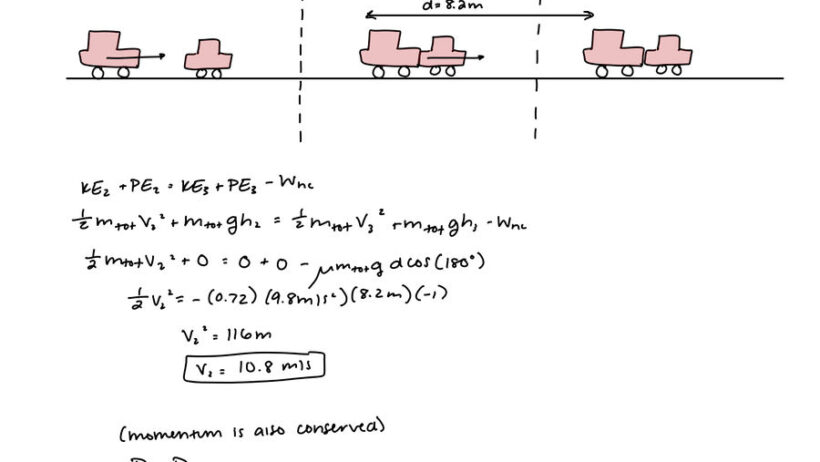Automobile collisions are seldom a topic of pleasurable discourse. However, they serve as an astute demonstration of fundamental principles of physics, particularly in the realm of energy conservation. The phenomenon of energy conservation states that energy cannot be created or destroyed; instead, it can only be transformed from one form to another. This immutable law of physics permeates various aspects of our daily lives, particularly in the context of car accidents. To comprehensively explore how a car accident exemplifies the conservation of energy, one must delve into the different types of energy involved in vehicular movement, the mechanics of collisions, and the resultant energy transformations.
The initial premise rests upon the kinetic energy possessed by vehicles in motion. Kinetic energy is defined by the equation KE = 1/2 mv², where m represents mass and v indicates velocity. Thus, as a vehicle accelerates, its kinetic energy increases dramatically. A compact sedan traveling at 60 miles per hour, for instance, embodies substantial kinetic energy. When an accident occurs, this kinetic energy must be accounted for; it does not simply vanish. Rather, it transmutes into alternative forms of energy upon impact.
Upon collision, the vehicles involved experience a rapid deceleration. This dramatic change in motion leads to the conversion of kinetic energy into several other forms. The most notable transformation is into thermal energy, which manifests as heat generated by the friction occurring between the colliding bodies. Additionally, parts of the car, such as the metal frame and other structural components, undergo deformation, absorbing energy in the process. This energy is dispersed in elastic and plastic deformations, illustrating how materials respond under stress. The mechanisms of energy transfer during a collision epitomize the conservation of energy law.
Moreover, some energy is converted into sound energy, producing the cacophony of screeching tires and crumpling metal that accompanies accidents. The loud noises reflect another outlet for the energy previously defined as kinetic. Each auditory signal produced represents a portion of the kinetic energy transformed into a different form.
An essential concept in understanding collisions is the discussion of inelastic and elastic collisions. Most vehicle crashes are classified as inelastic collisions, where the kinetic energy that is not conserved is transformed into other forms of energy, as described earlier. During an inelastic collision, the vehicles involved crumple and often remain crumpled together post-impact, demonstrating the loss of kinetic energy and the transfer into deformation of the vehicle materials.
In contrast, elastic collisions, while rare in automotive contexts, serve to further elucidate the principles at play. In purely elastic collisions, both momentum and kinetic energy are conserved. However, the reality of car crashes seldom allows such an idealized scenario; thus, the focus typically remains on inelastic collisions, where the reality of energy transformation is made evident.
Another critical factor in this discourse is momentum. Momentum, defined as the product of mass and velocity, is yet another facet of energy conservation that plays a pivotal role in collisional dynamics. According to the principle of conservation of momentum, the total momentum of a closed system remains constant if no external forces act upon it. During an accident, the momentum before the crash can be calculated and is equal to the momentum after the crash, even though the kinetic energy may not be conserved. This differential illustrates the complexity inherent in the interactions during vehicle collisions, where energy transformations occur, but the underlying principles of momentum conservation prevail.
The repercussions of these transformations extend far beyond the immediate event of a car accident. Understanding energy conservation in these contexts is critical for automotive design and safety engineering. Car manufacturers invest in technology such as crumple zones, which absorb kinetic energy to minimize the forces transmitted to occupants inside the vehicle upon impact. The effective design of these zones illustrates a tangible application of knowledge related to energy conservation, protecting lives while adhering to the fundamental principles of physics.
In summary, car accidents exemplify the law of energy conservation through various forms of energy transformations. The kinetic energy of moving vehicles converts into thermal energy, sound energy, and energy absorbed by deformation. Understanding these dynamics not only offers an insight into the mechanics of collisions but also holds significant implications for safety engineering and automotive innovations. It is paramount that continued education and advocacy around these principles extend into how society approaches vehicular safety and automotive design. As we commit to addressing the urgent issue of climate change, it is essential to acknowledge how elements of physics, such as energy conservation, dictate our interactions both as individuals and as a society with automotive technology.







